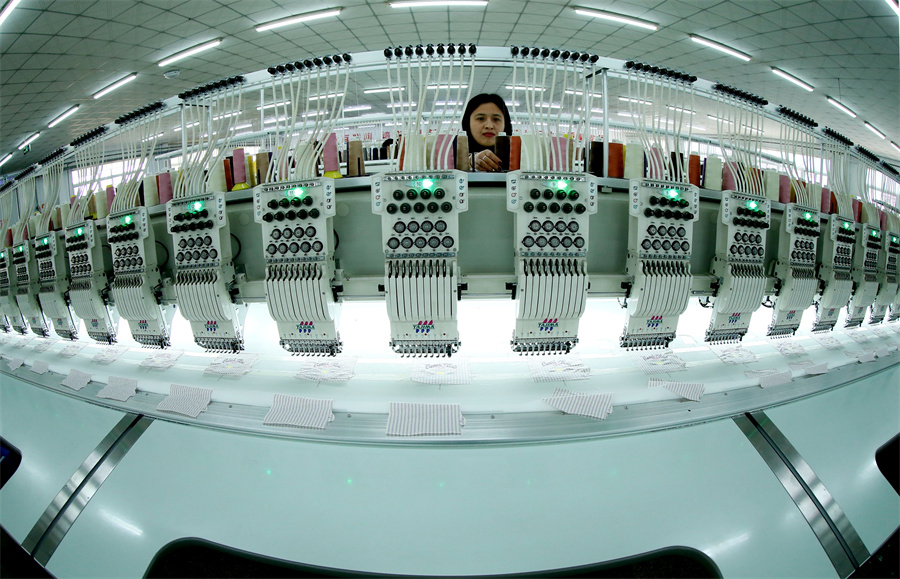
China's textile and apparel makers have stepped up efforts to cut carbon emissions during manufacturing and processing, and have accelerated the industry's green transformation.
China has targeted to peak carbon dioxide emissions before 2030 and achieve carbon neutrality before 2060.
China's textile and apparel industry emits around 230 million metric tons of CO2 annually, accounting for 2.8 percent of national industrial emissions, according to the China National Textile and Apparel Council.
READ MORE: Focus on equipment renewal to benefit industry, say insiders
Erdos Group, a Chinese cashmere manufacturer based in Ordos, Inner Mongolia autonomous region, has set up four labs and collaborates with colleges and scientific institutions to monitor the climate of the grassland and conditions of grass seeds and soil.
"For the source of the cashmere industry, we aim to build a more scientific and sustainable way of cultivation, and explore a path to protect the natural ecology of goat breeding," said Dai Tana, general manager of Erdos Cashmere Group.
In the production and processing area, Erdos has strengthened research and development of new technologies in dyeing and knitting to further reduce carbon emissions.
Last year, the production of each cashmere sweater reduced carbon emissions by 2.16 kilograms throughout its lifecycle compared with 2022.
"The textile industry is an important livelihood industry and an environmentally sensitive one," said Zheng Yan, deputy director of the consumer products department at the Ministry of Industry and Information Technology.
"Promoting green, low-carbon, circular and sustainable development of the textile industry is of great significance to foster new quality productive forces and achieve harmonious coexistence between humans and nature," Zheng said.
Meanwhile, Jinjiang, Fujian province-based domestic sportswear giant Anta Sports Products Ltd, whose sales revenue has ranked tops among Chinese sportswear product makers for 11 straight years, said the company aims to achieve carbon neutrality before 2050.
Before 2030, Anta aims to achieve net-zero carbon emissions and zero use of native plastics from its self-owned facilities. It also plans to achieve zero landfill of waste from its production processes, and raise the proportion of sustainable products to 50 percent of the total before 2030.
Advance Denim, a Guangdong province-based denim producer and the oldest denim mill in China, supplies the fabric to more than 400 brands globally, including plant-based denim to Levi Strauss.
ALSO READ: Guangdong moving up digital textile chain
"We would like to make denim one of the most environmentally friendly fabrics. We purchased sustainable and environmentally friendly fibers to develop and innovate denim fabric," said Wang Zongwen, managing director of Advance Denim.
Jiangsu Dasheng Group Co Ltd, founded in 1895 as a cotton mill, has introduced zero-carbon fiber raw materials, and is expected to build China's first green, carbon-neutral spinning factory by 2025, with an annual capacity of more than 6,000 tons.
The company, which exports its textile products to nearly 50 countries and regions, has the highest market share in the domestic home textile market, with its high-quality yarn production capacity ranking among the top three in the country.


